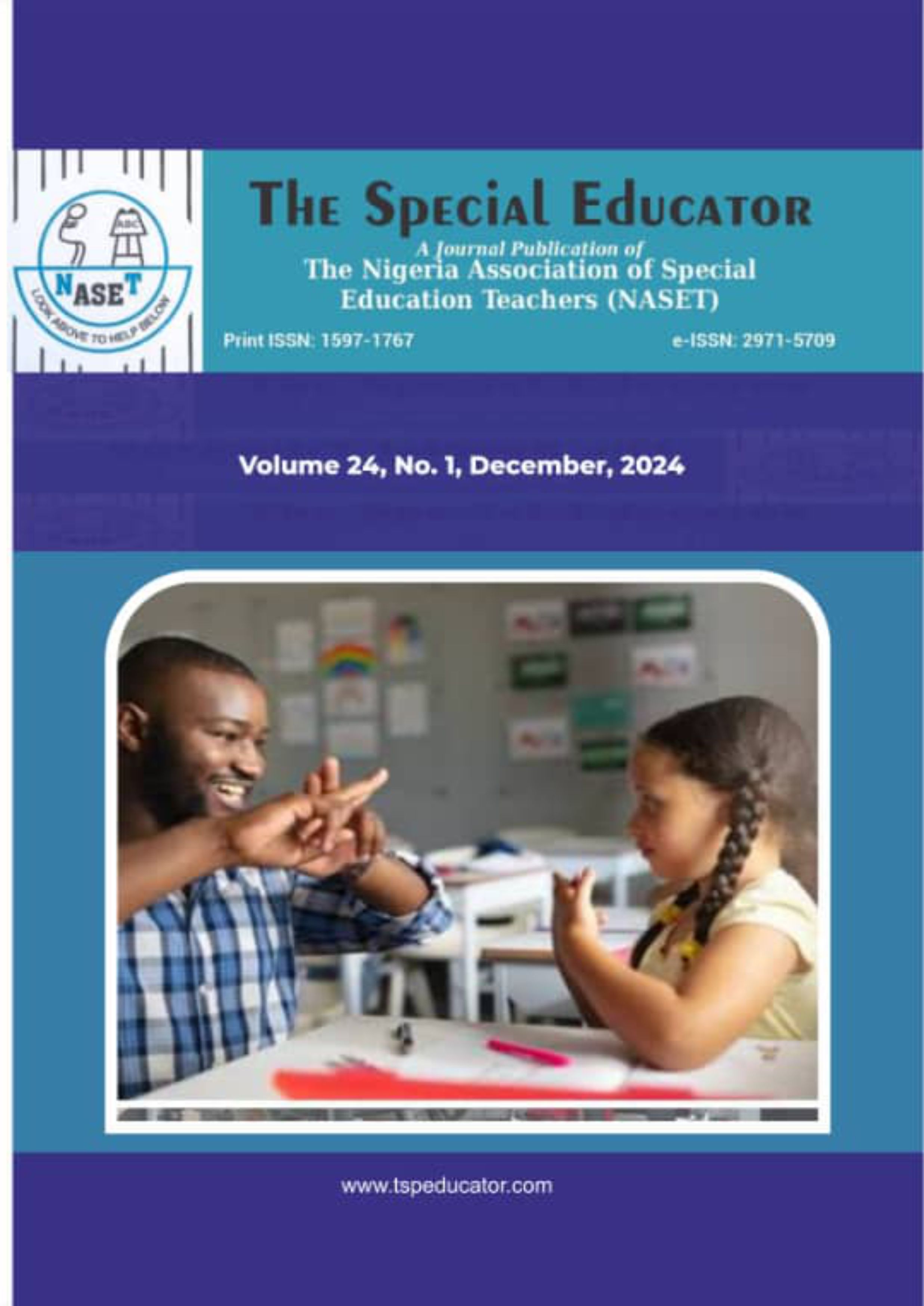Professionalising Skills in Teaching Writing to Children with Dysgraphia in Nigeria
Keywords:
Professionalising Skills, Teaching, Writing, DysgraphiaAbstract
Dysgraphia is a condition that causes trouble with writing expression. Dysgraphia is a brain-based issue it’s not as a result of a child being lazy. For many children with dysgraphia just holding a pencil and organizing letters on a line is difficult. Their handwriting tends to be messy, and many children struggle with spelling and putting thought on paper. Therefore, this paper explains the concept of dysgraphia, and the types, causes, and characteristics of dysgraphia. It discusses handwriting, its benefits, and pre-writing skills. The paper deals with factors affecting bad handwriting (dysgraphia) which include; errors in writing by hand, family-related factors, and factors related to Children. Furthermore, the paper discussed teaching strategies that can help children develop their writing skills and professional skills that will help teach writing to children with dysgraphia in Nigeria. Lastly, types of educational intervention that can be used to eliminate dysgraphia were extremely discussed. A conclusion was drawn and the paper recommended that; Teachers should be patient and give additional time to children with dysgraphia to complete their writing exercises. They should also determine which skill works best for the child with dysgraphia in the classroom.
References
Bamidele, M. S. (2017). Poor handwriting problems and its negative impact on the academic achievement of children with learning disabilities. Retrieved from https://medium.com on July 2019.
Crouch, A. L., & Jakubecy. (2007). Dysgraphia: How it affects A student’s performance and what can be done about it. A case study published in Teaching exceptional children plus; Vol 3(3).
International Dyslexia Association (IDA) (2000). Understanding Dysgraphia. Retrieved from http://www. Inter dys. Org.
James, R. (2018). What is dysgraphia. Symptoms, causes, Risk factors vs dyslexia. Health line media a Red Ventures Company. healthline.com/health/com.
Keifer, J.J. (2015). Handwriting and fine motor skill development in the kindergarten classroom. Submitted to the Graduate Faculty of the College of Education Texas Christian University. In partial fulfillment of the requirements for the degree of master of education
Kumar, A., Kumari, S., Garodia, S. & Sinha, R. (2018). Identification of Developmental Dysgraphia by Handwriting Analysis. Project report submitted in partial fulfillment
Of the requirements for the degree of bachelor of technology in computer science and Engineering RCC Institute of Information Technology
Knobelauch, L. (2008) How to Assist a Student with Dysgraphia in the Classroom. Super Duper® Publications. Retrieved from www.superduperinc.com
Perles, K. (2009). Classroom Intervention for Dysgraphia: Advice for Teachers. Teaching students with Learning Disabilities. Retrieved from https://www.brighthubeducation.com/special-ed-learning-disorders/58613-interventions-for-students-with-dysgraphia/
Richards, R. (1999). The source for dyslexia and dysgraphia. East Moline, IL: Lingui system
Rostami, A., Allahverdi, F. & Mousavi, F. (2014). Dysgraphia: The Causes and Solutions
International Journal of Academic Research in Business and Social Sciences. 4 (2), pp 7-12.
Taura, A. U. (2016). Strategies for teaching children with learning disabilities. Disciplinary advocacy: Access to disability intervention in Nigeria. Jos: Access publishers.
Torreno, S. (2010). Interventions for Dysgraphia: Remediation, Assignment Modification & Accomodations. Bright hub Education. Retrieved from https://www.brighthubeducation.com/special-ed-neurological-disorders/64669- interventions-for-dysgraphia-ideas-for-teachers-parents- and-students/
Touch-type Read & Spell (TTRS) (2019). 9 Strategies for dysgraphia. Retrieved from https://www.readandspell.com
Waliter, C., Kowaas, M., Simanjuntak, N.L., Wijaya, S., Yohanes, S.D., & Ningtyas, V. (2015). Teaching children with diverse Ability: Dysgraphia. Observation Report.


